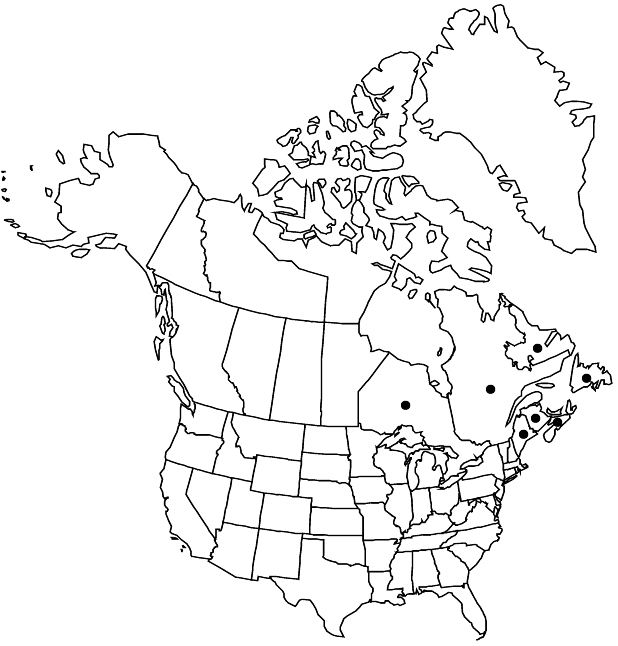Primula laurentiana
Rhodora 30: 68. 1928 ,.
Plants 10–48 cm, herbaceous; rhizomes thin, short; rosettes not clumped; vegetative parts usually farinose but sometimes efarinose in age. Leaves not aromatic, indistinctly petiolate; petiole broadly winged; blade without deep reticulate veins abaxially, oblanceolate to spatulate, 3–10 × 0.4–1.3 cm, thin, margins crenate, apex obtuse to acute, surfaces glabrous. Inflorescences 3–12-flowered; involucral-bracts saccate, ± equal. Pedicels erect or spreading, sturdy, 5–10 mm, length ca. 2 times bracts, somewhat flexuous. Flowers homostylous; calyx green, campanulate, 5–8 mm; corolla lavender, tube 6–9 mm, length 1.5–2 times calyx, eglandular, limb 10–16 mm diam., lobes 5–8 mm, apex emarginate. Capsules ellipsoid, length 1.5–2 times calyx. Seeds without flanged edges, reticulate. 2n = 72.
Phenology: Flowering summer.
Habitat: Moist open areas, meadows and stream banks on calcareous soils
Elevation: 0-300 m
Distribution

N.B., Nfld. and Labr., N.S., Ont., Que., Maine.
Discussion
Primula laurentiana is the octoploid member of a polyploid complex of sect. Aleuritia in North America that encompasses ploidy levels from 2x to 14x. It is most similar to the hexaploid P. incana; it differs in its larger flowers, more open inflorescence, and more robust stature. Both species are heavily farinose and have homostylous flowers. The efarinose form described as forma chlorophylla Fernald is a common variant throughout the range of the species. In coastal northeastern Canada, P. laurentiana blends morphologically and ecologically with P. stricta and crossing between the two is likely; assessment of species identity can be difficult here.
Selected References
None.
Lower Taxa
No values specified."-2timescalyx" is not declared as a valid unit of measurement for this property."timesbracts" is not declared as a valid unit of measurement for this property."thin" is not a number."-2timescalyx" is not declared as a valid unit of measurement for this property.